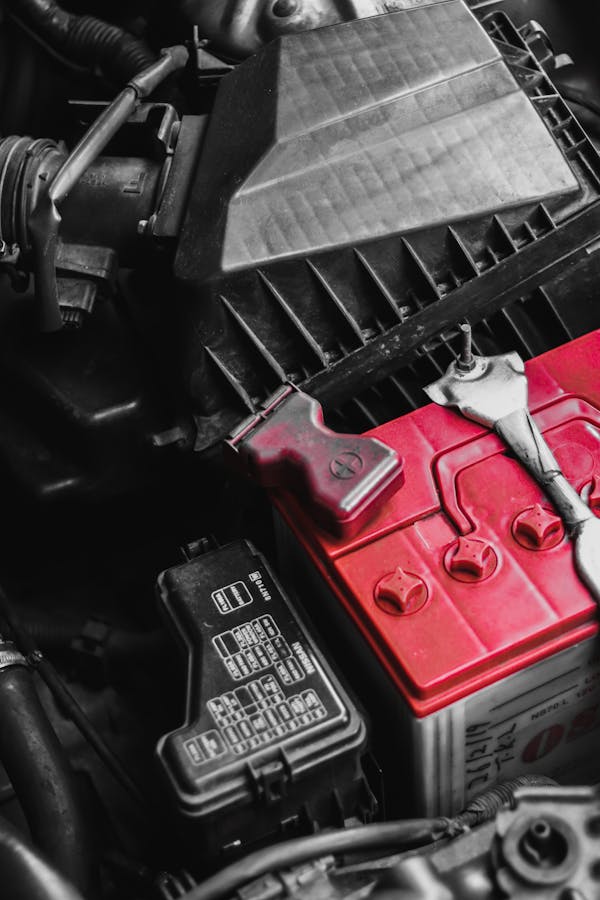A dead battery is a nightmare for automotive dealerships. The cold weather exacerbates the problem, making it harder for batteries to maintain their charge.
The freezing temperatures also cause corrosion, adding resistance to the battery. Inspect and clean the battery terminals to help prevent it from dying. To clean, disconnect the cables and use baking soda and a toothbrush to scrub away the corrosion, then apply petroleum jelly to the terminals.
Check for Corrosion
Corrosion is an unsightly white or blue, powdery substance that forms around car battery terminals. This prevents the battery from getting a good charge and can lead to a variety of electrical issues in your vehicle. Corrosion also increases resistance, which makes it harder for the battery to start. Find out more at Car Battery Maintenance Winter.
Luckily, it’s easy to clean battery corrosion from your vehicle. All you need is a little bit of baking soda, warm water, and a wire brush. You may also want to wear safety equipment such as a face mask and gloves to keep the corrosive material out of your eyes and skin.
Before starting, make sure the engine is off and that the battery cables are disconnected. Then, remove the battery and take a close look at it. If the cables are in good shape and secure to the hold-down bar and clean, you’re ready to start cleaning. If they’re frayed or cracked, you should replace them immediately.
Clean the Terminals
Corrosion around the battery terminals adds resistance to the electrical connection, forcing your car’s battery to work harder. Cleaning the terminals prevents this from happening and is a simple DIY task.
Before beginning, make sure your vehicle is off and use gloves and eye protection to protect yourself from the caustic battery acid that could leak. Then, disconnect each cable from the battery – starting with the negative one, which is usually black and marked (-).

Once the terminals are free of corrosion, wash them off with a spray bottle filled with water or a rag dipped in baking soda and water. Then, reattach the cables and rub a thin coat of petroleum jelly onto each terminal to lubricate them and protect against future corrosion.
This is an easy step, but it’s important to follow proper safety practices when working with batteries. If you are uncomfortable handling a battery or have questions about proper procedure, it is best to visit your local mechanic for assistance.
Install a Battery Blanket
If you live in a cold climate, it’s a good idea to install a battery blanket or engine block heater. These are designed to warm the oil and battery fluid in your car, reducing the need for power from your battery to start the car on frigid winter mornings.
The blanket also insulates the battery and keeps it from absorbing too much heat. However, the blanket may trap too much heat and cause the battery to overheat, so you should remove it if this happens.
Most modern batteries are sealed AGM types, and these require very little maintenance in the form of checking the water levels or hooking them up to a trickle charger. However, if you have an older flooded type, it’s important to follow these tips to keep your battery in top shape through the cold of winter. After all, no one wants to be stranded with a dead battery when the temperatures drop!
Test the Battery
Whether in your own garage or at the mall parking garage, keeping your car in a covered area helps keep its battery from freezing and keeps it warm. You should also have the battery tested before winter hits, and replace it if necessary.
A multimeter with a voltage test can help assess the state of your battery by reading its charge level and checking for any internal resistance. A full charge can mask signs of a bad battery. If the multimeter tests show that the battery is low and has a reduced capacity, bring it into AutoZone for a load test.
Over time, sulfation can build up on the battery terminals, limiting the flow of electricity to the starter and, in a worst-case scenario, stopping it from turning over. You can dissolve this build up, which typically looks like bluish foam, with a solution of water and baking soda. Just be sure to use proper eye, hand and clothing protection while cleaning.